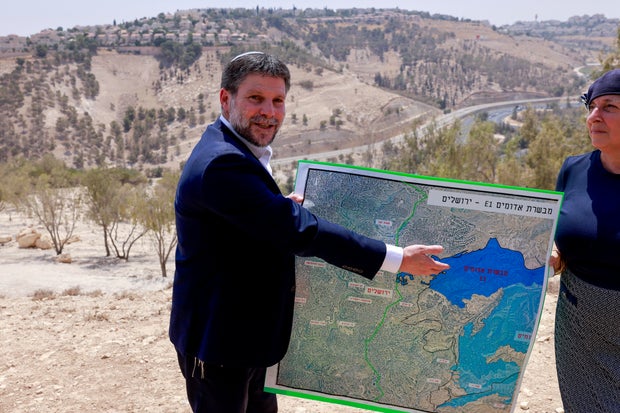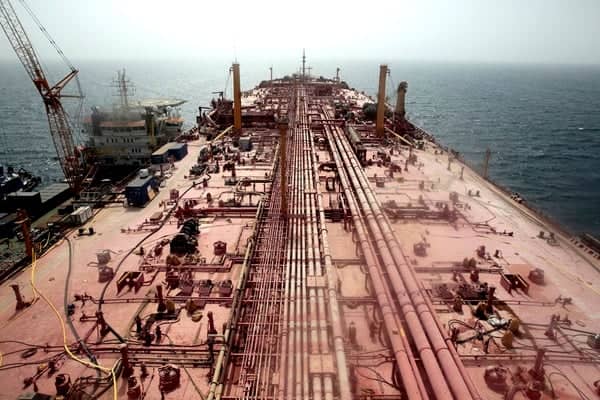Smotrich Green-Lights E1 Plan as Diplomats Line Up to Endorse Palestinian Statehood
Decision Day in Jerusalem
Finance Minister Bezalel Smotrich signed off Thursday on the long-debated E1 settlement project, declaring that “the time for polite discussions has passed.” Work crews can now move bulldozers toward a barren ridge east of Jerusalem that Palestinians call Jabal Abu Ghneim—a patch of land smaller than Manhattan’s Central Park but large enough, critics say, to slice the West Bank in two.
- 1,355 new housing units, expandable to 3,000
- Commercial strip, police station and Jewish day school
- Access road that connects directly to Ma’ale Adumim
The timing is no accident: as envoys from Spain, Ireland and Norway prepare to roll out red carpets for a formally declared “State of Palestine” in September, Israeli hard-liners have launched a pre-emptive land grab.
Why the Map Matters
Draw a line on any atlas and the risk is obvious. E1 sits squarely between Ramallah and Bethlehem. Palestinian traffic between the northern and southern halves of the West Bank would need a tunnel or an overpass—projects Israel has neither budgeted nor approved. Human-rights monitors warn that the zone effectively turns the West Bank into two cantons flanking a thick Israeli corridor.
A leaked EU briefing paper calls the move a “geographical fait accompli” that could trigger “targeted sanctions on settler-linked entities.”
International Jabs and Domestic Cheers
Washington offered only a muted rebuke: “We continue to oppose unilateral actions by either side.” Across the Atlantic, the mood was frostier. European diplomats huddled in Brussels on the same day, finalizing language that labels E1 construction a “direct threat to the territorial contiguity of a future Palestinian state.”
At home, Smotrich’s supporters erupted in celebration. National Security Minister Itamar Ben-Gvir handed out blue-and-white flags to teens on East Jerusalem streets, chanting, “The land will never be divided again.”
Beyond Bricks and Mortar
The project matters for more than cartography. Roughly 5,000 Palestinian families in the Bedouin communities of Khan al-Ahmar and Abu Dis risk displacement once the barrier, checkpoints and bypass roads follow the cranes. Aid agencies estimate that 40 percent of the West Bank’s grazing land could become off-limits.
Yet Israel’s treasury insists the venture brings economic growth—new jobs for construction workers, supply routes for West Bank contractors, a potential windfall of ₪2 billion in residential taxes once homes are occupied.
What Now?
September recognition plans are still scheduled. But Smotrich’s blunt warning—“any statehood declaration will meet an Israeli reply written in concrete”—has raised the stakes. Diplomats now debate whether to push recognition forward, delay in hope of reviving talks, or pivot toward punitive measures against the very ministry that broke ground on E1 this week.

Jerusalem’s Eastern Frontier: A 2025 Gamble on E1
Under a white August sun, Israel’s finance minister unrolled a laminated sheet of territory just east of the capital. The tract—an empty swath locals call E1—has slumbered in diplomatic limbo for twenty-plus years. That quiet may be ending. Smotrich pointed to the parchment-colored contours and predicted that, within months, bulldozers could chew ribbons of asphalt into the slope while the first tower cranes appear within one year.
From Freeze to Fast-Track
The E1 plateau sits between Jerusalem and the sprawling settlement of Maale Adumim. Every earlier government that considered building there backed away once Washington frowned. Former U.S. envoys left folders labeled “E1—Handle with Care.” Smotrich tore that caution in two.
“We finally have friends in Washington who view sovereignty as justice, not a provocation,” he proclaimed, praising President Trump and Ambassador Mike Huckabee as “the most faithful Washington has ever sent.”
A final ministerial vote is slated for the coming week. If the resolution survives, plans are locked for:
- 3,500 housing units stitched into Maale Adumim’s outer ring
- New bypass roads lacing the ridge to keep Israeli commuters clear of Palestinian traffic
- Commercial and industrial plots meant to anchor more than 15,000 new residents
Bureaucratic Miles Still to Go
Even under accelerated procedures, several signatures remain:
- Regional planning council must sign off on final blueprints
- Defense Ministry must issue a security map for the building envelope
- Finance Ministry, Smotrich’s own desk, must transfer first-stage budgets
Officials whisper that earth-moving bids are already circulating among contractors, a signal that the “mere technicalities” could vanish overnight.
How the World Reacts
Civil-rights Coalitions
Hours after Smotrich’s press conference, Peace Now staged a protest outside the Knesset gates. Their placards read “E1 = End of Two States.”
“This gambit sentences both peoples to rolling cycles of violence,” the group argued.
The Palestinian Leadership
In Ramallah, the foreign ministry branded the move an “annexationist war crime” and summoned European diplomats for emergency discussions. Palestinian officials warn that the corridor would choke access between the northern and southern West Bank, slicing any future state into disjointed cantons.
U.S. Posture
Early statements from the White House praised Israel’s right to “expand where history and security converge,” but avoided explicit mention of E1. Washington appears to be giving Jerusalem rhetorical leeway while privately asking for calibrated optics.
Netanyahu: Quiet or Calculated?
Prime Minister Benjamin Netanyahu’s office issued a laconic line: “The government is reviewing all strategic options.” Anonymous Likud aides insist the premier remains undecided, wary that international backlash could cloud looming judicial-overhaul negotiations. Yet Netanyahu’s absence from the rollout speaks louder than canned sentences.
Domestic Scoreboard
For Smotrich, championing E1 was supposed to rekindle his base. Polls, however, tell another story. After months of internal bickering and stalled budgets, his Religious Zionism list would crash below the electoral threshold if ballots were cast today, according to the latest Panels Politics survey. The E1 push appears as much a rescue attempt for his own political survival as a statement of ideology.
For residents of nearby East Jerusalem villages like Azzariya and Abu Dis, the distant rumble of pending construction feels like a drumbeat measured in concrete. Whether the land between them morphs into suburbs or remains a buffer of scrub and rock now rests on a flurry of paper rather than principle. The week ahead will decide if the cranes rise—and, perhaps, if peace plans fall.




